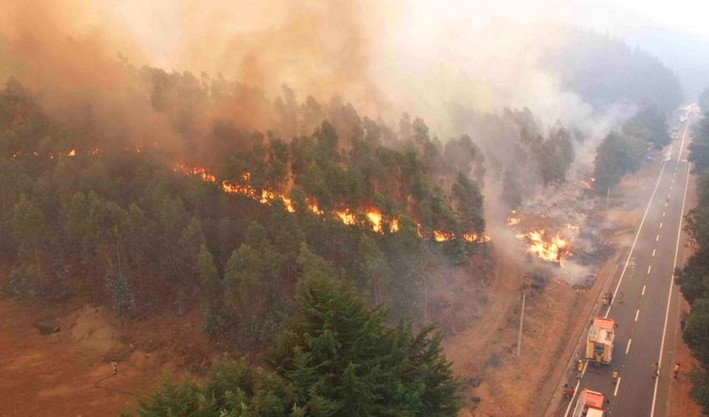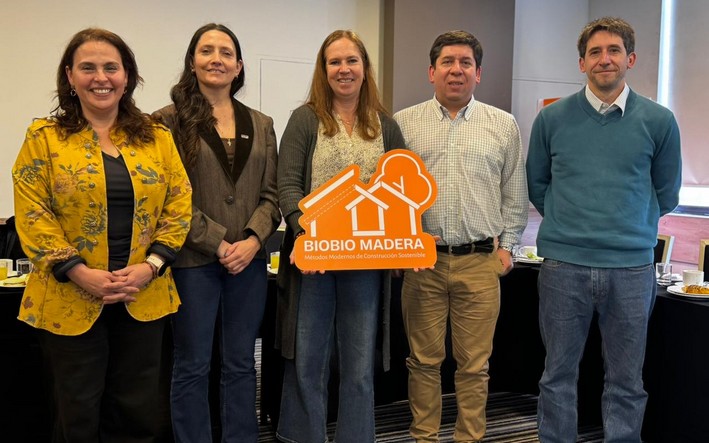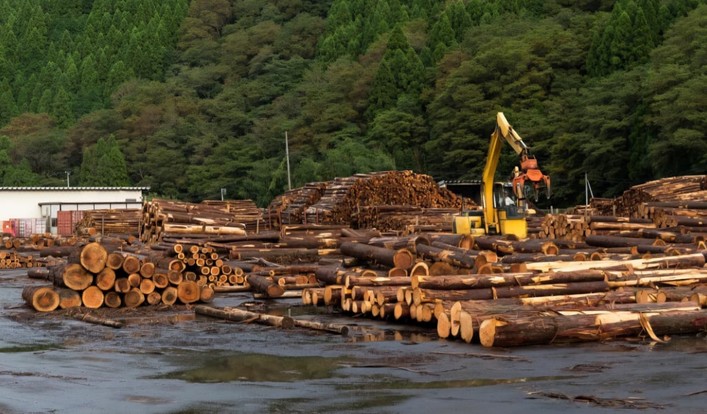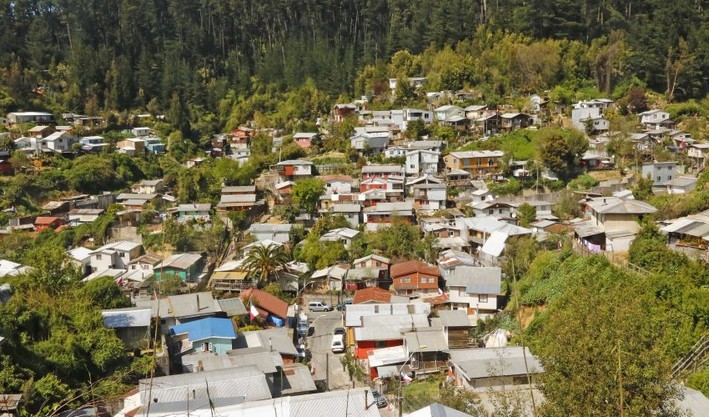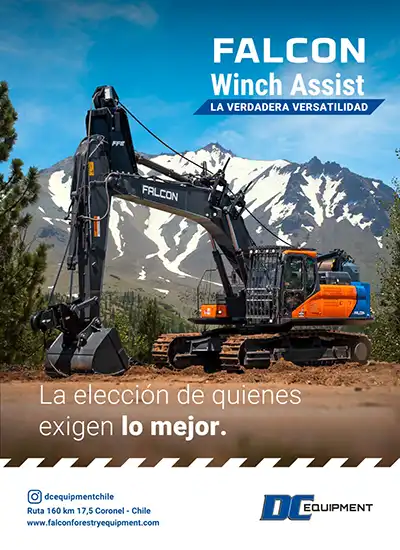Municipalities of Greater Concepción prepare for wildfire risk this summer
Wildfires have become a structural threat for Chile, and the Biobío Region currently concentrates most of the vulnerability. According to CONAF data, the area affected by fire nationwide increased by 194% in the last decade, rising from an average of 55,378 hectares burned between 2004-2014 to 162,675 hectares between 2014-2024.
The outlook is even more concerning when observing the magnitude of the incidents: fires exceeding 200 hectares nearly doubled in frequency, increasing from 43 to 81 on average (+88%), while the average damage per event grew by 185%, with devastated areas rising from 905 to 1,677 hectares.
In this context, Biobío appears as the hardest-hit region. According to a technical study by the company Equifax, 10% of its total area has burned at least once in the last decade, equivalent to 237,622 hectares. Additionally, it concentrates the largest area under "very high" threat category in the country: 156,270 hectares, equivalent to 6.5% of its territory, mainly in Greater Concepción, Arauco, Lebu, and Curanilahue.
The last season, which ended on June 30, became the second most catastrophic in regional history.
Prevention in the face of high temperatures
The regional director of CONAF, Esteban Krause, highlighted that the corporation maintains ongoing mitigation work.
"We carry out vegetation management, controlled burns, and firebreaks in strategic areas to reduce fire spread. We also train communities, farmers, and rural schools through the 'Communities Prepared for Wildfires' program," he stated.
"To date, we have held technical and coordination meetings with the various organizations involved in wildfire prevention and firefighting. We actively participate in COGRID and have formed technical roundtables to coordinate actions during the highest risk period. Likewise, we maintain permanent coordination with SENAPRED, police, Armed Forces, Public Ministry, municipalities, Firefighters, and private companies, in order to promptly activate all emergency systems and face the challenges of the 2025-2026 season," commented the regional director.
With climate projections anticipating high temperatures, Biobío faces the wildfire challenge. How are the municipalities preparing?
Preparation of Greater Concepción municipalities regarding wildfires
With the arrival of September and the start of higher temperatures, the municipalities of Greater Concepción have activated their preparation plans to face the 2025-2026 wildfire season. The experience of past emergencies, combined with the climatic context anticipating drier and more intense summers, has led local authorities to coordinate joint strategies and demand greater state support.
Hualpén: Planning since August and progressive firebreaks
From the Hualpén Municipality, they emphasized that preparation begins months in advance: "We always start that planning in August. But firebreaks are only made after the rainy seasons end, because if you cut, it rains and it grows back. That's why firebreaks are made from September, October onwards, even November, December, and January."
Hualqui: Technical roundtables and community strengthening
The municipality detailed that for this summer, "the office team is being prepared with implements to support the emergency during the wildfire season, such as communication equipment with better range in the commune, a command post with all necessities, tools in municipal emergency vehicles, among others."
Additionally, technical roundtables are held with participation from Firefighters, Carabineros, forestry companies like CMPC and Arauco, CONAF, and the rural community. In parallel, work is done with the Community Prevention Network, key for assessing local risks and designing specific solutions.
"We are incorporating Incident Command System (ICS) trainings by CONAF and reinforcing staff training through the SENAPRED academy," added the municipality.
Chiguayante: Regulatory plans and work with neighbors
The commune of Chiguayante has focused on regulatory updates and territorial work. As explained by the Director of Citizen Security, Emergencies, and Civil Protection, Daniel Carrillo, "we have been holding meetings with the prevention network in the southern and northern sectors of the commune, reviewing risk factors. We have also done walks with hillside neighbors to determine evacuation routes and safe zones."
The official specified that the communal COGRID will be held in October, a space where all entities with risk management responsibilities will meet to coordinate technical and operational actions.
"During this time, firebreak work has been carried out on public lands, in preparation for the summer season," added Carrillo.
San Pedro de la Paz: Strategic plan under review
In San Pedro de la Paz, the Director of Public Security, Rodrigo Medina, stated that the strategic plan for 2026 is in full development. "We are already working on action plans regarding firebreaks. The strategic plan still needs approval from the mayor and SENAPRED, but we are doing well, preparing for what's coming in this area," he indicated.
Talcahuano: Maritime drill and ICS training
In Talcahuano, the Head of Disaster Risk Management, Boris Sáez, detailed that the municipality works on three fronts: training, drills, and reduction of combustible material.
"The last week of August we scheduled ICS training with CONAF, because the new SENAPRED Law requires its incorporation into municipal management. Additionally, together with the Navy and SINAPRED, we organized a wildfire drill in Tumbes, with maritime evacuation, scheduled for October," explained Sáez.
Simultaneously, the Directorate of Cleaning and Ornamentation, the Navy, the company Huachipato, and local forestry firms will reinforce firebreaks and reduce combustible material. The plan includes citizen campaigns to promote early reporting of fire outbreaks and increased municipal patrols in critical sectors.
Concepción: Comprehensive plan with emphasis on citizen education
The Mayor of Concepción, Héctor Muñoz, announced a comprehensive plan that includes reinforcing the construction and maintenance of firebreaks, municipal crews with machinery, and a contingency plan coordinated with CONAF, Firefighters, and the Presidential Delegation.
"We know it will be a complex summer due to climatic conditions, but our priority is to protect Penquista families and minimize emergency risks as much as possible," he declared. Muñoz also highlighted educational work with neighbors to promote land cleaning and reporting illegal burns.
Coronel: Firebreaks and community work
In Coronel, the head of the Risk and Disaster Management Department, Jaime Seguel, reported that the municipality carries out about 18 kilometers of firebreaks, in collaboration with the Regional Government and Sernafor.
"Weed clearing is done in hard-to-reach places, and community work in the prevention network is reinforced, with trainings addressing factors associated with burns," he stated.
Penco, Tomé, and Florida: Pressure for the use of technical fire
In a joint action, the mayors of Penco, Tomé, and Florida sent a letter to the Government requesting reconsideration of the ban on using technical fire in urban-forest interface zones. They argue that the accumulation of plant biomass is an "imminent risk" and that controlled burns, under CONAF protocols, are a necessary preventive tool.
The Mayor of Tomé, Ítalo Cáceres, emphasized: "We have lived through catastrophic situations in 2017 and 2023, and we don't want them repeated. That's why collaborative work between communes is key."
For his part, the Mayor of Penco, Rodrigo Vera, highlighted the creation of the Greater Concepción Wildfire Prevention Association, initially integrated by Penco, Tomé, and Florida, but open to more municipalities. "With a public-private alliance we want to take preventive measures like firebreaks. Now conditions are optimal to advance, the ground isn't dry, it's the time to make firebreaks," he affirmed.
Source:Diario Concepción


